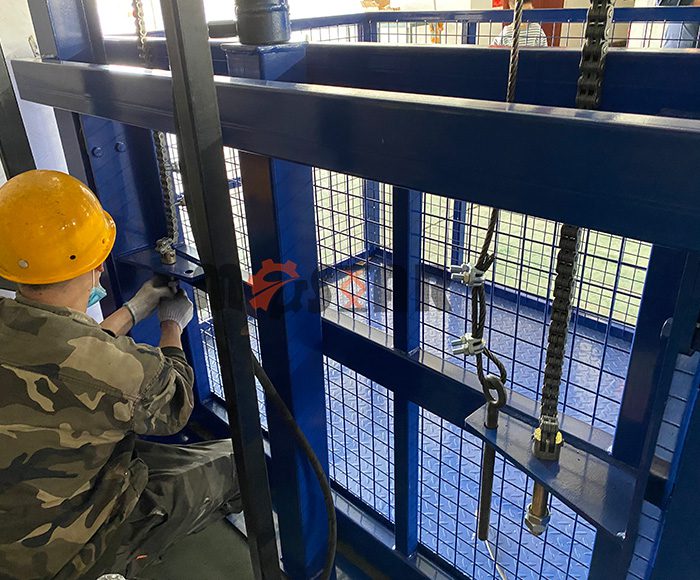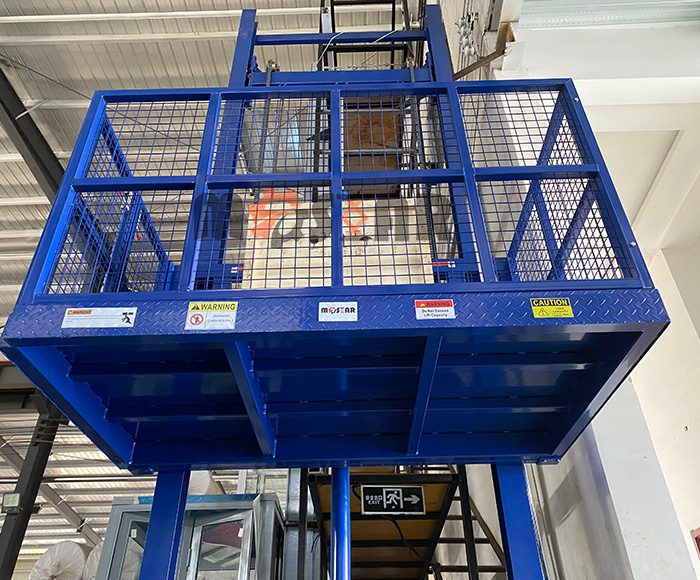A cargo elevator is a necessity for all businesses’ day-to-day activities. Unless you’re a strongman who can move the same weight these lifts carry. Even a few hours of downtime in operation can become a full-blown barrier that can cost you time, money and productivity. So what’s the effective way to avoid this dilemma? Regular inspections and proper maintenance. With a checklist at your disposal, you can help keep your business running to its full potential even before you’ve finished your morning coffee.
Regular Inspection Checklist for Cargo Elevators
Conducting regular maintenance inspections is paramount for identifying potential issues. They should be addressed before they turn into a gordian knot. So create a routine inspection plan. You can DIY it or hire qualified elevator technicians to do thorough examinations.
What Should Be Scrutinized?
- Lifting chains, steel wire rope, and Pulleys: These bear the entire load, so look for signs of fraying, wear, or slack that could lead to failures.
- Cables: Electric cables are the things that age easily. And sometimes, cables can also be damaged by external forces, such as it is bitten by rats. So we need to do checking occasionally.
- Control Systems: Test buttons, sensors, and response times to be certain that everything functions properly. Malfunctioning controls can cause operational delays.
- Emergency stop: Emergency stop buttons must work as intended to prevent accidents.
- Structural Integrity: Inspect for rust, cracks, or misalignments that could affect stability.
How Often Should You Inspect?
- Daily: A very short inspection before each use assures doors open easily, buttons function, and there’s no apparent damage. Clean the area around and inside the elevator cargo to render it debris-free.
- Weekly: Look at the control panels, fixtures, and cables. Test safety features and lubricate moving parts with lubricating oils like grease, if needed.
- Monthly: Perform a detailed inspection of the hoist system, electrical components, and overall performance.
Common Cargo Elevator Issues and How to Fix Them
After some time, you might have noticed the loud creaking noise, change of pace, or irregular movement in your cargo elevator. It’s a strong sign that something is wrong. Below is a list of some common lift elevator shortcomings with the solution:

- Unusual Noises: The sounds such as grinding, squeaking, or rattling can be due to loose bolts, faulty parts, or a lack of lubrication oil. Tighten any free parts and apply lubrication oil to other moving components. If the noise is still coming, then calling a mechanic is a logical decision.
- Slow or Delayed Operation: If your cargo elevator takes a long time to respond, monitor the control panel, motor, and sensors. Dust, misalignment, or a defective motor could be hampering the mechanism. Reset the complete system and clean the sensors. If the defect continues, professional maintenance is recommended.
- Jerky Movements: An elevator should always glide smoothly. Misaligned tracks, sloppy cable tension, or damaged parts could be the root cause. In this scenario, adjustment of cable tension and realigning tracks can help.
- Frequent Breakdowns: If your small cargo elevator breaks down on a daily basis, then it immediately requires preventive maintenance.
Right Time to Call a Technician
When the above mentioned or your own troubleshooting doesn’t resolve the issue, or you spot any kind of recurring problems, it’s the right time to use the expertise of Pro. A certified/licensed technician can pinpoint the hidden cause and fix it in a short interval. Don’t wait for a full breakdown, act instantly if you see any red flag!
Safety Measures for Maintaining Cargo Elevators
A stitch in time saves nine. A proactive approach to repair and safety can circumvent expensive failures and deadly accidents. First and foremost, follow lockout/tagout protocols before doing any maintenance, even of cargo elevators for homes. This basically means turning off the power source of the lift and locking it to forestall any accidental activation. It’s a basic step that can save lives.
Wearing safety equipment is absolutely non-negotiable. Whether you’re just inspecting cables, testing brakes, or checking structural integrity, always use helmets, gloves, and safety cables. Full compliance with industry standards is key. Codes and norms are often updated, so ensure your elevator meets the latest safety guidelines. Use safety signage and labels so that everyone knows the rules.
If we need to check the bottom parts of the cargo elevator, please make sure to use straps to lift the platform/cabin and secure it.

Create a detailed maintenance log. Document every inspection, repair, and servicing activity. You can also write down past issues so when the next time technicians come, it becomes easy to spot the problems before they escalate. Lastly, invest in staff training for proper usage. Teach employees correct loading and unloading procedures, weight limits, and how to report any concerns.
Long-Term Benefits of Regular Maintenance
Maintenance is a long-term investment that returns in different ways. You may not understand in the beginning, but eventually you will reap its benefits. Here’s why routine maintenance of hydraulic cargo lift elevators is a must:
- Save Resources: Minor complications can morph into costly disasters if ignored. Regular maintenance catches problems early and prevents pricey replacements and emergency repairs.
- Keep Operations Under Control: Downtime is equal to lost output and frustrated crew. Scheduled maintenance helps your small cargo lift stay reliable to keep your business moving without any delays.
- Extend Your Elevator’s Service Life: Elevators are machines that are purposefully bought as long-term investments, and with the right care, they can last for decades.
- Peace of Mind: The stellar condition of the elevator, whether its a cargo elevator or mezzanine goods lift, lets you focus on running your business instead of dreading potential failures.
Contact Mostar Lift Today
To sum up, the cargo elevator with periodic assessments and timely repairs offers long-term performance, safety, and cost-effectiveness. For expert maintenance, trust Mostar Lift—backed by 20+ years of experience and a strong reputation. Our team specializes in manufacturing elevators in several industries and delivers professional service. Call us, or submit an inquiry today to keep your elevators running at their best!
Frequently Asked Questions
A cargo elevator is a heavy-duty lift designed to transport goods, materials, or equipment between floors in commercial premises.
The cargo elevator dimensions depend on the available installation size and lifting cargo dimensions, such as platform dimensions ranging from 1.5m x 2.0m to 4.0m x 5.5m and can be customized according to working.
A typical cargo elevator, based on its lifting height, load capacity, and configurations, usually travels at a speed between 4 meters per minute to 10 meters per minute.
For hydraulic power type, usually cargo lift’s platform is standard opened type, just with doors and guard rails, while an elevator is with a closed cabin. The cabin type can be painted steel plate material type, or it can also be stainless steel material type.
An elevator shaft is a vertical passageway that houses and guides an elevator as it moves between floors.
